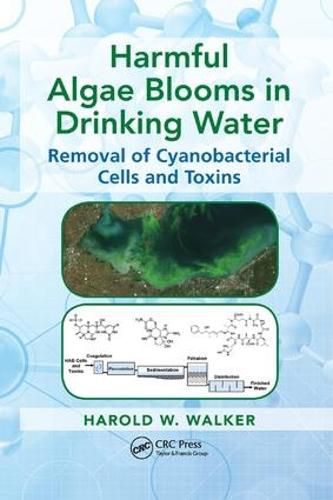Readings Newsletter
Become a Readings Member to make your shopping experience even easier.
Sign in or sign up for free!
You’re not far away from qualifying for FREE standard shipping within Australia
You’ve qualified for FREE standard shipping within Australia
The cart is loading…






Harmful algal blooms (HABs) occurring in freshwater, and the associated toxins they produce, are dangerous to animals and humans. Mitigating the increasing presence of HABs presents a major challenge to water managers and drinking water utilities across the world. This book explores the current research on removal of HABs and toxins from drinking water. It provides the necessary tools so that treatment plant operators, engineers, and water managers can understand the vulnerability of drinking water treatment plants to HABs and develop treatment processes to minimize the impact of these contaminants.
Although conventional treatment processes can be effective for the removal of HAB cells and some HAB toxins under optimal conditions, the potential exists for significant breakthrough of toxins during normal operation. As a result, there is a recognized need for more advanced techniques. Possible advanced processes for removing HAB toxins include granular activated carbon (GAC), powdered activated carbon (PAC), or oxidative processes. This book reviews both conventional and advanced treatment processes and presents clear and easy-to-understand procedures for the design of systems for optimal cell or toxin removal.
$9.00 standard shipping within Australia
FREE standard shipping within Australia for orders over $100.00
Express & International shipping calculated at checkout
Harmful algal blooms (HABs) occurring in freshwater, and the associated toxins they produce, are dangerous to animals and humans. Mitigating the increasing presence of HABs presents a major challenge to water managers and drinking water utilities across the world. This book explores the current research on removal of HABs and toxins from drinking water. It provides the necessary tools so that treatment plant operators, engineers, and water managers can understand the vulnerability of drinking water treatment plants to HABs and develop treatment processes to minimize the impact of these contaminants.
Although conventional treatment processes can be effective for the removal of HAB cells and some HAB toxins under optimal conditions, the potential exists for significant breakthrough of toxins during normal operation. As a result, there is a recognized need for more advanced techniques. Possible advanced processes for removing HAB toxins include granular activated carbon (GAC), powdered activated carbon (PAC), or oxidative processes. This book reviews both conventional and advanced treatment processes and presents clear and easy-to-understand procedures for the design of systems for optimal cell or toxin removal.